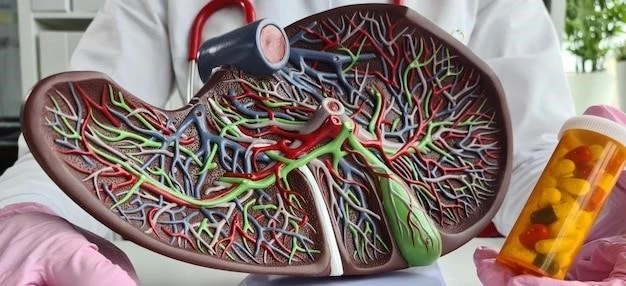Understanding Arterial Tortuosity
Causes of Arterial Tortuosity⁚ Learn about genetic factors, connective tissue disorders, and conditions leading to this vascular issue.
Causes of Arterial Tortuosity
Arterial tortuosity can result from genetic factors, connective tissue disorders like Ehlers-Danlos syndrome, or conditions like Marfan syndrome.
Some individuals are born with abnormal collagen or elastin genes, leading to weakened arterial walls that can become twisted or tortuous. Connective tissue disorders can affect the structure and function of blood vessels, increasing the risk of arterial tortuosity.
Conditions such as Marfan syndrome, which affects the body’s connective tissue, can also contribute to the development of arterial tortuosity. Understanding these underlying causes is crucial for early detection and management of this vascular issue.
Symptoms of Arterial Tortuosity
Recognizing symptoms of arterial tortuosity is vital. Common signs may include chest pain, shortness of breath, high blood pressure, and heart murmurs. It can also lead to complications like stroke or aneurysm if left untreated.
Individuals experiencing any of these symptoms should seek medical attention promptly. Early diagnosis and intervention can help prevent potential complications and improve the overall management of arterial tortuosity.
Treatment Options for Arterial Tortuosity
When it comes to treating arterial tortuosity, options may include medication to manage blood pressure or cholesterol levels, surgical procedures to correct the shape of twisted arteries, or minimally invasive interventions depending on the severity of the condition.
A multidisciplinary approach involving vascular specialists, cardiologists, and surgeons is often recommended for comprehensive treatment. It is essential to discuss these options with healthcare providers to determine the most suitable treatment plan for individual cases.
Complications of Arterial Tortuosity
Arterial tortuosity can lead to serious complications such as an increased risk of aneurysm formation, stroke, heart failure, or blood clots. These complications can have significant impacts on cardiovascular health and overall well-being.
It is crucial to be aware of these potential complications and work closely with healthcare professionals to monitor and manage the condition effectively. Early intervention and adherence to treatment plans can help reduce the risk of complications associated with arterial tortuosity.

Diagnosis of Arterial Tortuosity
Diagnosing arterial tortuosity typically involves imaging tests like angiography, MRI, or CT scans to visualize the blood vessels’ structure. Additionally, genetic testing may be recommended to identify underlying conditions contributing to the tortuous arteries.
It is essential to consult with healthcare providers for a proper diagnosis. Early detection through diagnostic procedures allows for timely intervention and management strategies tailored to the individual’s specific needs. Regular monitoring is also essential to track the progression of arterial tortuosity.
Research on Arterial Tortuosity
Ongoing research on arterial tortuosity focuses on understanding the genetic basis, exploring new diagnostic techniques, and developing innovative treatment approaches. Studies aim to improve early detection methods and enhance therapeutic interventions to optimize patient outcomes.
By participating in clinical trials or supporting research initiatives, individuals can contribute to advancing knowledge and improving the management of arterial tortuosity. Stay informed about the latest developments in this field to access cutting-edge treatment options and potential breakthroughs.
Lifestyle Management for Arterial Tortuosity
Managing arterial tortuosity involves adopting a heart-healthy lifestyle. This includes regular exercise, a balanced diet low in saturated fats and cholesterol, maintaining a healthy weight, avoiding tobacco and excessive alcohol use, and managing stress effectively.
By prioritizing these lifestyle factors, individuals can help mitigate the risk factors associated with arterial tortuosity and promote cardiovascular health. Consult healthcare professionals for personalized guidance on lifestyle modifications tailored to your specific needs and condition.
Prevention of Arterial Tortuosity
While arterial tortuosity may have genetic components, certain preventive measures can lower the risk. Maintaining a healthy lifestyle with regular exercise, a balanced diet, quitting smoking, monitoring blood pressure and cholesterol levels, and attending routine medical check-ups are vital in preventing arterial tortuosity.
Being aware of the risk factors and taking proactive steps towards a heart-healthy lifestyle can significantly reduce the likelihood of developing arterial tortuosity. Consult healthcare professionals for personalized guidance on preventive strategies tailored to your individual health profile.
